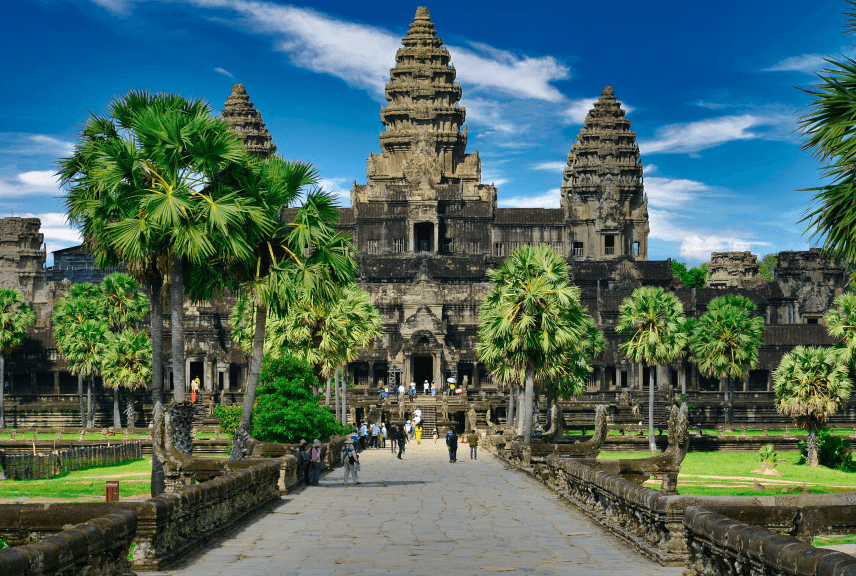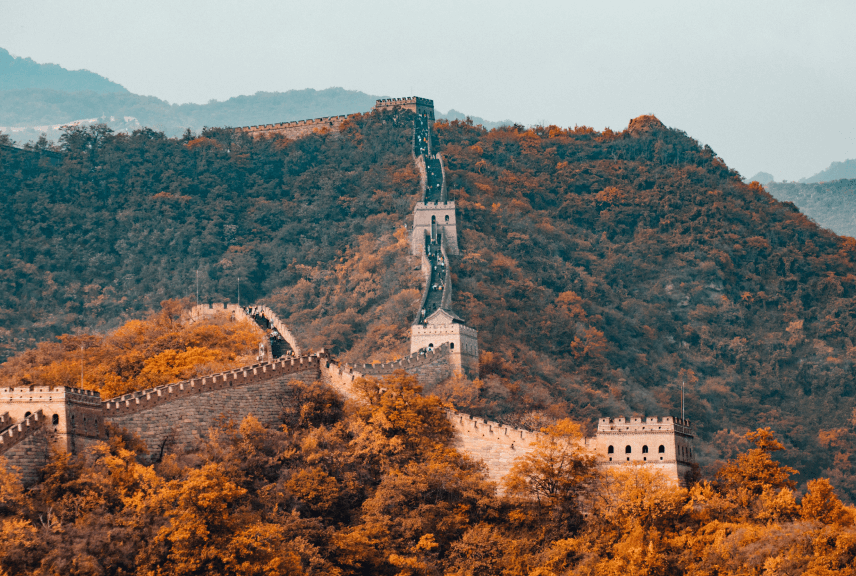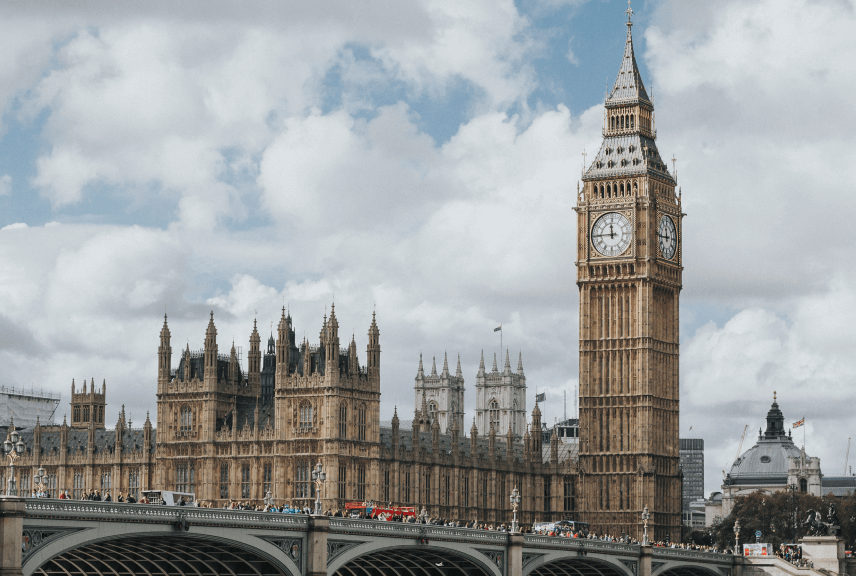Let’s dive into another highly requested article: a guide for a 10-day Bali itinerary. I know there are already plenty of guides out there, but personally, I feel like many of them can be overwhelming with too many different locations.
If you’ve only got 10 days, my suggestion is to stick to 2-4 places and truly savor the time you spend there instead of rushing around every day.
Living in Australia, I frequently get the chance to visit Bali throughout the year, so I’d like to think I know a thing or two about Indonesia’s most popular island.
In this guide, I’ll share my favorite spots in Bali and what, in my opinion, are the must-see and must-visit places. And because I don’t want to overload this itinerary, I’ll also give you some alternatives so you can create your own ideal 10-day Bali itinerary.
Best places to visit during 10 Days in Bali
Before we dive into my full itinerary, let me give you an overview of my favorite spots in Bali.
This way, you’ll have a better idea of which places will be included.
To start, I love to stay in the up-and-coming hotspot of Canggu, which is especially great for a younger crowd or choose to stay in Seminyak, which is great for families and attracts a slightly older demographic. These two spots are popular for a reason! Here, you’ll find some of the best restaurants, cafes, markets, and beach clubs that Bali has to offer.
After the beach and sun, you may be craving a more laid-back vibe. I recommend you take a little break in Ubud. It’s a charming hippie town nestled in the jungle, perfect for nature and yoga lovers. It’s also a haven for health food junkies with a large variety of vegetarian, vegan and raw food options.
Now, if you’re up for exploring Bali’s neighboring islands, you can’t miss the Gili Islands or Nusa Islands. These hidden gems are absolute scuba diving paradises and are home to some of the most stunning beaches in Indonesia.
Lastly, let’s head back to Bali and stay in Uluwatu, Nusa Dua, or Jimbaran. These coastal spots are known for their epic waves, making them a surfer’s paradise. It’s also here where you find some of the best beaches in Bali.
Bali Itinerary Day 1-2: Canggu or Seminyak
It’s always a good idea to start your trip by getting to know some of the local hot spots. During your first two days, I recommend staying in either Canggu or Seminyak depending on what kind of vibe you’re after.
In both spots, you’ll find plenty of cafes and restaurants to explore, along with some great street markets and lots and lots of trendy boutiques with clothing, homewares and souvenirs.
Personally, I would recommend Canggu to younger visitors as it has a more outgoing and trendy scene. On the other hand, Seminyak is perfect for families with kids as many resorts cater to them, as well as an older demographic looking for a relaxed vibe, with plenty of great restaurants and resorts, with easy accessibility.
Day 1
Canggu:

When you’re in Canggu, kickstart your day by visiting some of Bali’s best cafes and brunch spots. One of my favorites is Copenhagen Canggu, where you can enjoy a delicious breakfast, amazing coffee, and tasty brunch items like croissants, avocado on toast, and scrumptious scrambled eggs.
If you happen to be there on a Sunday, I highly recommend checking out the La Brisa Farmers Market from 10 am to 4 pm. It’s held at La Brisa, a beach club in Canggu that I absolutely love. They have a market every Sunday where you can find handmade clothes, handcrafts, and fresh produce.
Depending on the time you arrive, you can even stay for lunch or enjoy some cocktails. The location is fantastic and always gives me the vibes of an old pirate hideout in the Caribbean!
But wait, we’re not done with the beach just yet! It’s time to surf. The best time to hit the waves is early in the morning or late afternoon. Canggu is perfect for all types of surfers, including beginners.
You’ll find plenty of surf schools and board rental shops along the beaches of Canggu, so it’s worth heading out there on a good day. I personally like Echo Beach as the main beach Batu Bolong does get extra crowded.
Lastly, don’t miss the breathtaking sunset in Canggu. You can choose to relax on one of the beaches or opt for one of the beach clubs. La Brisa, Finn’s, and The Lawn are all amazing options, in my opinion, and you should definitely try all of them during your stay if you can.
I also love Ji Restaurant, which is on the rooftop of the beautiful 5-star Tugu Hotel, which feels slightly more classy, plus their sushi is delish!
Seminyak:


If you’re staying in Seminyak, I think you should kickstart your day with breakfast at Sisterfields. It’s one of the most popular cafes in Seminyak, and trust me, it’s popular for a reason! The coffee is great and even though I rather go for a hearty than sweet breakfast, I can confirm their French Toast is absolutely to die for.
After that, I suggest you head to Seminyak Beach for the day. While Bali may not be known for having the most beautiful beaches, Seminyak Beach is definitely quite nice.
Get a beach bed, read a book, tan, or go for a surf or walk, the beach is big and wide and there’s plenty to do – or nothing at all.
If you’re hungry, I recommend stopping in at one of Seminyak’s beach clubs. My two favorite spots here are Potato Head Beach Club and Ku De Ta.
Potato Head Beach Club has a pretty outgoing vibe, but it’s also great to just hang out by the pool and enjoy some drinks. With several pool bars and different restaurants, you can indulge in sushi, pizza, and other world-class dishes.
Ku De Ta has more of an upscale vibe and is a great dinner spot. It’s also a good place to enjoy some cocktails and watch the sunset.
Day 2
Canggu:


On your second day in Canggu, start with a yoga session at The Practice or Radiantly Alive, which has a beautiful breezy rooftop, great for waking up the body and starting the day.
If you don’t mind getting a bit off the beaten path, I can also recommend Udara Bali, which is in another village close by called Seseh.
You can also find some breakfast spots around Seseh Beach. And if you have rented a scooter, I recommend exploring the rice paddies around Jalan Pantai Pererenan to Jalan Raya Seseh, it’s so peaceful out there and a very different atmosphere to the busy heart of Canggu around Batu Bolong.
I have so many favorite cafes in Canggu, it’s hard to pick where to eat every day. But for today, I suggest you head to Shady Shack, a Canggu institution that has been around for a very long time. Sit in the outside area overlooking the rice paddies and I love ordering their Haloumi Breakfast.
For the hottest time of the day, I recommend getting some pampering done. There are plenty of great spas in Canggu, Spring, AMO and Tonic. I also got my nails done at Trove Artistry.
If you don’t mind a touristy crowd, head to Tanah Lot Temple in the afternoon for sunset. It’s this stunning Hindu temple built on a rock formation right by the coast. It’s a pretty cool spot as you see the sun setting right behind the small temple in the water. However, it does get busy here!
Seminyak:


If you’re staying in Seminyak, I have a great suggestion for your second day. How about joining a cooking class to learn the secrets of making delicious Balinese dishes?
There are plenty of options available. I’ve done it twice, once with a group of friends and it was so much fun, and once by myself and it was just perfect to meet new people. You’ll even get to visit a local market, handpick fresh ingredients, and cook up some amazing local dishes.
For dinner, you should definitely check out Mano Beach House. It’s one of my absolute favorite restaurants in Seminyak, with its breathtaking beachfront location, bohemian vibe, and mouthwatering food.
Trust me, you won’t be disappointed. Make sure to try their seafood platter – it’s a must. And of course, the views, especially at sunset, are unbeatable.
Bali Itinerary Day 3-5: Ubud
Now it’s time to head to the heart of Bali, Ubud.
This charming town is known for its lush green landscapes, traditional culture, and spiritual vibes. It’s definitely a must-visit during your trip.
Day 3: Ubud


Once you arrive in Ubud, there are so many things to do and see. You can start your day with a visit to the famous Tegalalang Rice Terrace, which is just outside of Ubud. It’s definitely worth seeing this iconic spot in person and taking some photos for your Instagram. Come early to avoid the crowds!
After that, head to the Sacred Monkey Forest Sanctuary. You can get up close and personal with Balinese long-tailed macaques. Sometimes a little too personal! Make sure to follow the rules and keep your belongings safe from these cheeky monkeys.
I know it’s cool to get a picture taken with a monkey sitting on your shoulder, but from experience, I can tell you it doesn’t always go well. I had the terrible experience of a monkey jumping up on my back and peeing on me. But maybe that means good luck!
For lunch, grab a bite at one of Ubud’s many organic cafes, such as KAFE or Clear Cafe. They offer delicious and healthy meals made with locally sourced ingredients. And like most cafes in Bali, you’ll also get your coffee fix here with amazing lattes and flat whites.
In the afternoon, I suggest you check out the Ubud Art Market for some shopping. Here, you’ll find a variety of souvenirs, clothing, and other goods at affordable prices. Don’t forget to bargain and have fun with it!
Personally, I think this is one of the better markets to buy souvenirs as it’s much cheaper than the markets in Canggu or Seminyak.
Day 4: Ubud


On your last day in Ubud, you can choose to get up early and climb Mount Batur to see the sunrise from the top. The trek up is mostly in the dark but it’s easy if you’re fit. Once the sun rises, you’ll be rewarded with stunning panoramic views of the surrounding landscapes and Lake Batur. I booked this hike in combination with a visit to the hot springs afterward which was the perfect combination of adventure, physical challenge and relaxation.
Back in Ubud, it’s time to soak up some culture and spiritual vibes. Visit the stunning Ubud Palace, also known as Puri Saren Agung. It’s a beautiful palace with traditional Balinese architecture and is still home to the royal family of Ubud. You can either join a guided tour or simply wander around at your own pace.
Next, make your way to one of the many temples in Ubud. The Goa Gajah Temple, also known as the Elephant Cave Temple, is an absolute must-see with its intricate carvings and serene atmosphere. It’s one of my favorite temples in Bali because it looks so funky and different from many other temples.
To wrap up your day, Ubud offers some really cool spots that have a similar vibe to beach clubs, even though there’s no beach. One of the absolute coolest day clubs is Wanna Jungle Pool & Bar.
It’s the perfect place to jump in a pool and enjoy a delicious cocktail while basking in the lush jungle views.
Day 5: Munduk or Sidemen


If you’ve got some additional time, I highly recommend stopping by either Munduk or Sidemen for a day or overnight trip. These charming villages nestled in the mountains of Bali offer an authentic experience that you won’t find in busier towns like Ubud. Both are about 1.5-2 hours drive from Ubud.
In Munduk, you’ll get to visit stunning waterfalls, have a chance to explore coffee plantations, and hike through picturesque rice terraces. The atmosphere here is so peaceful and serene, making it the perfect place to unwind and connect with nature.
Sidemen is another fantastic option for nature lovers, with breathtaking landscapes of rice fields, mountains, and forests. Take a leisurely walk or bike ride through the countryside to get a proper feeling and impression of what life in Bali is like for the locals.
While Ubud is well-known and relatively quieter compared to places like Canggu or Seminyak, it might not have that hidden gem vibe you’re looking for. If that’s something you’re looking for, Munduk or Sidemen could be great alternatives, even if it’s just for a day trip from Ubud.
Bali Itinerary Day 6-8: Nusa Islands or Gili Islands
After spending some time in Bali’s cultural hub, it’s time to head out for some island hopping in Eastern Bali.
The Nusa Islands and Gili Islands are both stunning and definitely some of my favorite spots around Bali. They offer a mix of stunning beaches, crystal-clear waters, and plenty of activities.
Nusa Islands


The Nusa Islands consist of three islands – Nusa Lembongan, Nusa Ceningan, and Nusa Penida. All three islands offer something different, and you can easily spend a few days exploring each one.
With their laid-back vibes and beautiful beaches, they are the perfect places to relax and unwind. I personally loved staying on Nusa Lembongan, it’s small enough to drive around and you can take a day trip to its larger sister Nusa Penida.
Plus, you can cross the iconic Yellow Bridge that connects Nusa Lembongan Nusa Ceningan, which is the smallest of the islands but it’s got real laid-back vibes!
If you’re feeling adventurous, make sure to take a trip to Penida and check out some of the popular activities such as snorkeling or diving with Manta Rays at Manta Point or climbing down to Kelinking Beach in Penida.
Gili Islands


The Gili Islands are a group of three small islands – Gili Trawangan, Gili Meno, and Gili Air. These islands are known for their pristine beaches and crystal-clear waters, perfect for swimming and snorkeling.
The coolest part is, that no motorized vehicles are allowed, so you’ll only see bicycles and horses, which makes it super laid back and quiet.
Each island has its own unique vibe, so make sure to check out all three if time allows as they are all so different.
Gili Trawangan is the largest and most developed island with plenty of restaurants, bars, and activities. It’s also got a good nightlife and you’ll find a large young backpacker crowd.
Gili Meno is the smallest and most secluded, perfect for a romantic getaway.
Gili Air is a bit more relaxed than Gili Trawangan but still has some great cafes and restaurants to check out. Gili Air is my personal favorite because it’s a great compromise between the other two and has some amazing cafes and restaurants as well.
In this itinerary, I’ll mainly focus on the Nusa Islands, but if you want to find out more about the Gili Islands, then check out my guide on where to stay in the Gili Islands!
Day 6: Nusa Lembongan


After hopping off the boat from Bali, your first stop in the Nusa Islands is Nusa Lembongan. It’s got a small main town and while it’s not the largest, it is probably the most developed of the three islands but still maintains that cozy island vibe.
To start your day, I highly recommend visiting one of my all-time favorite coffee shops on the island, The Deck Cafe. Not only do they serve delicious brunch and breakfast items, but their ocean views are absolutely breathtaking. It’s the perfect way to start your day off right.
After that, make your way to Devil’s Tear, where you can witness the massive waves crashing against the rocks, which is super cool. The cliff jumps here are also super cool but definitely not for the faint-hearted.
A little tip: renting a scooter or a golf cart on the island will make getting around a breeze!
In the afternoon, treat yourself to a visit to Ohana, a hotel restaurant, and beach club. They’ve got an infinity pool that overlooks the Indian Ocean, and you can even book a relaxing massage there to unwind after exploring all day.
Day 7: Nusa Penida


On day seven, you should take a day trip to Nusa Penida. It’s the biggest and least developed of the three islands, but it’s totally worth visiting. Beaches like Kelingking Beach and Broken Beach are absolutely gorgeous and must-sees on your trip.
Kelingking Beach is a must-visit. It has the amazing Instagram-famous T-Rex-shaped cliff, and the water is so clear you won’t believe your eyes. Just a heads up, though, it’s a bit of a hike to get down to the beach, if you attempt it make sure to wear comfy shoes and bring plenty of water and be prepared for the cheeky monkeys along the way.
If you choose to hire a driver for the day, tell him that you plan on climbing down because it will take several hours for you to get down and come back up.
After that, make your way to Diamond Beach for even more stunning views and some relaxation on the beautiful white sand. If you have some extra time, I highly recommend checking out Angel’s Billabong, a natural pool formed by the ocean.
Now, here’s something you should know about Nusa Penida. It’s a pretty big island, and getting around can be a bit challenging. Some people opt to rent scooters but trust me, the potholes are massive everywhere, so I wouldn’t really recommend it. If you’re comfortable riding a motorcycle, then go for it.
Otherwise, you can always hire a private driver who will take you around the island for the whole day.
Day 8: Nusa Ceningan


On your last day in the Nusa Islands, you should definitely make a trip to Nusa Ceningan! It’s a smaller and quieter island compared to Nusa Lembongan, but it’s worth it!
I also recommend, that you rent a scooter and explore the island at your own pace. Don’t forget to make stops at amazing spots like Secret Beach or Blue Lagoon. And when it’s lunchtime, treat yourself to some delicious and authentic Indonesian food at one of the warungs (local eateries)!
I know Nusa Ceningan is not as popular as the other Nusa Islands, but I highly recommend spending at least half a day exploring this hidden gem. And if you’re planning to cross the Yellow Bridge, why not stay a bit longer and enjoy all that Nusa Ceningan has to offer? I loved spending some time at Sea Breeze Cafe laying in their hammocks and dipping into the infinity pool.
In the afternoon, head back to Nusa Lembongan and take a boat back to Bali or continue your adventure to your next destination.
Bali Itinerary Day 9-10: Uluwatu
It’s time to head back to mainland Bali! For your last two days, you have a few options: Uluwatu, Nusa Dua, or Jimbaran. They’re all located in the same area on that little peninsula in the south of Bali.
Uluwatu is definitely the most popular one, which I’ll get into in this itinerary, but Nusa Dua or Jimbaran are just as good, if not better! They have a more laid-back vibe, which many people, including me, absolutely love. So, if you’re looking for something chill, both of them are definitely worth checking out.
Day 9: Uluwatu


When you first arrive in the south of Bali, your first stop should definitely be Uluwatu. It’s known for its breathtaking beaches and incredible cliffs. I highly recommend staying at Bingin Beach because it’s a bit more secluded and peaceful compared to other parts of Uluwatu.
During the day, take your time to explore all the stunning beaches that Uluwatu has to offer. Some of my personal favorite spots include Padang Padang Beach, Dreamland Beach, and Bingin Beach. Each of them has its special charm and is perfect for either catching some waves or simply relaxing on the beach or in one of the beach clubs.
In the evening, don’t miss out on the iconic sunset at Uluwatu Temple. Uluwatu Temple is situated atop a cliff, with some of the best views of the Indian Ocean and the surrounding area, and it’s another must-do if you ask me.
And while you’re at Uluwatu Temple, you can buy a ticket to experience the Kecak Fire Dance show, a traditional Balinese dance performance that’s very unique. I personally don’t like fire shows but it shows you a part of Balinese culture.
Day 10: Uluwatu or Nusa Dua Beach


On the last day in Bali, I would use it to just relax and make the most of what Bali is so beloved for surfing and good food. Wake up early to catch some waves at Bingin Beach or head over to one of the many surf schools in Nusa Dua Beach. After all, Bali is known for its amazing surf spots.
In the afternoon, treat yourself to a delicious meal at Mana Uluwatu, a vegan restaurant with some of the best food. Don’t worry if you’re not vegan – their dishes are so flavorful and hearty that you won’t even miss the meat!
As your trip comes to an end, take a moment to soak up the stunning views and reflect on all the amazing memories you’ve made in Bali.
Pre-travel tips for a 10 day Bali itinerary
When it comes to Bali (Indonesia), it’s just like any other foreign country. You’ll need to get visas, book flights, and navigate different languages and currencies. But don’t worry, I’ve got some tips below to ensure your trip is smooth and safe.
How to get to Bali
Bali has one airport, Ngurah Rai International Airport (DPS), located in Denpasar. You’ll find direct flights from major cities like Singapore, Kuala Lumpur, Bangkok, Hong Kong, and Dubai. If you’re coming from Europe or the United States, chances are you’ll have to transit through one of these cities before reaching Bali.
On my last two flights, I flew via Singapore and Bangkok, which are both awesome cities for a little stopover if you have some extra days to spare.
Here’s a tip: if you want to slash your flight prices in half, try traveling during the off-season. The high season is from July to September and during Christmas/New Year, and that’s when prices skyrocket!
How to get around in Bali
Moving around in Bali is a breeze, with plenty of transportation options available.
Here are a few popular ones:
Scooter Rental
Renting a scooter is by far the most affordable and convenient way to explore Bali. It gives you the freedom to move at your own pace while allowing you to take in the sights, sounds, and smells of this beautiful island. Scooter rentals are almost everywhere and typically cost around IDR 50,000 to IDR 75,000 (around US$3.50 to $5.00) per day. Before you hit the road, remember to put on a helmet, have an international driver’s license, and always be cautious. Traffic in Bali can be hectic!
For more information about renting a scooter in Bali, check out my full guide!
Private Driver
If you prefer a more comfortable and relaxed option, hiring a private driver might be your best bet. Bali is full of drivers offering their services for a reasonable price. For around IDR 400,000 to IDR 600,000 (about US$28 to $42), they’ll take you wherever you want for a full day. This is especially great for long-distance travel or when visiting multiple sites in a day.
Taxi
For short rides, taxis are handy. Bali’s most reputable taxi company is Blue Bird. They’re known for their reliable service and fair rates. Just make sure to ask the driver to turn on the meter. You can also download the Blue Bird app, which works like Uber, letting you book rides easily.
GO-JEK or Grab
These are Indonesia’s versions of Uber or Lyft, offering both car and motorbike rides. All you need to do is download their app, enter your destination, and the driver will come to you. It’s generally cheaper than regular taxis and can also deliver food, groceries, and more!
Remember, no matter how you choose to get around, Bali’s traffic can be unpredictable. Plan your trips accordingly and always leave some buffer time, especially nowadays when traffic in Bali can get crazy busy.
Visa Requirements for Bali
Visiting Bali generally requires a visa. However, nationals from over 160 countries, including the United States, UK, Canada, and Australia, can enter Indonesia visa-free for tourism purposes for up to 30 days.
This visa is non-extendable and non-convertible to any other type of visa. If you’re planning to stay longer or visit for other purposes, such as business or social-cultural activities, you’ll need to obtain the relevant visa from an Indonesian embassy or consulate in your home country prior to your travel.
Language, Currency & Religion in Bali
The official language is Bahasa Indonesia, but don’t worry, most people in tourist areas speak English. I’ve always gotten along well with just English, even in more remote areas.
When it comes to currency, the Indonesian Rupiah (IDR) is used in Bali. It’s a good idea to have some cash on hand, especially when traveling to remote places where not all establishments accept credit cards. Fun fact: even in popular areas, you’ll find many places that only accept cash. And with the exchange rates, you might end up having millions on you!
Bali is famous for its unique blend of Hinduism and Buddhism. More than 80% of the population practices Balinese Hinduism, and you’ll come across many temples and religious ceremonies throughout the island. Remember, when visiting temples, it’s important to dress respectfully and follow any rules or customs. That usually means covering your shoulders and knees.
Health and safety tips for Bali
Bali is generally a safe place to visit, but as with any other travel destination, I always recommend taking some precautionary measures to ensure your safety. Here are a few tips:
Crime & scams
Unfortunately, tourists are often targeted by petty criminals in Bali. Be vigilant when out and about, especially in crowded areas or tourist spots. Make sure to keep an eye on your belongings at all times, and avoid carrying large amounts of cash. Don’t be afraid to haggle for prices, but also beware of scams. If something sounds too good to be true, it probably is.
Traffic & road safety
I mentioned earlier that traffic in Bali can be very crowded and hectic, especially in popular areas like Kuta or Seminyak. Make sure to pay attention at all times, whether you’re driving or walking. Also, always wear a helmet when riding a scooter, and definitely never drink and drive!
Health concerns
Bali is a wonderful tropical island, so it’s important to keep a few things in mind when you travel there. The most important thing is to always stay hydrated because it can get quite hot and humid in Bali. Don’t forget to wear sunscreen too! Lastly, I would advise you to never drink tap water and be cautious about the hygiene of the food you eat, as you wouldn’t want to experience the notorious Bali Belly.
Internet & SIM cards for Bali
For most of us, whether we’re holiday tourists or digital nomads, it’s super important to stay connected. Luckily, Bali has got you covered with a pretty decent internet connection in most places. You’ll find Wi-Fi available at most hotels, cafes, and restaurants. If you want to stay connected on the go, it’s a good idea to grab yourself a local SIM card. Klook is one of the best providers of SIM cards in Bali. They offer affordable plans with fast internet speed and awesome coverage all over the island. And they can even deliver your SIM card right to your hotel, which I think is a great feature and I do it every time I go to Bali.
Costs in Bali
One of the greatest aspects of Bali is how affordable it can be, especially compared to other global tourist destinations. From accommodation and food to transportation and activities, your dollar can go a long way here.
Accommodation
In terms of accommodation, the prices can vary so much depending on what you’re looking for. You can find budget guesthouses or hostels for as low as US$10 a night, while a decent hotel room in a popular area might cost you anywhere from US$30 to $80 per night. However, if you’re looking for a super luxury experience, then of course Bali also has resorts like the Four Seasons where you’ll be spending hundreds of dollars per night.
Food and dining
The food scene in Bali is as diverse as it is affordable. Local food stalls, or “warungs,” offer delicious local dishes for just US$1 to $2, which I highly recommend trying for some authentic Indonesian cuisine. Mid-range restaurants usually charge around US$5 to $10 for a meal. However, if you prefer dining at high-end restaurants or international cuisines, you may end up spending anywhere from US$20 to $50 per person, which is still super affordable considering what you get for your money.
Activities
If you’re planning to engage in activities and go sightseeing in Bali, the prices can range from very cheap to more expensive depending on your choice. For example, a visit to a temple may only cost a small entrance fee of about US$1 or $2. However, if you prefer adventure activities like hiking Mount Batur or visiting the Elephant Safari Park, you may be looking at spending US$50 to $100. Overall, in my opinion, Bali offers a great balance between affordable and luxurious options when it comes to activities.
Best time to visit Bali
Bali has a tropical climate, so it’s pretty warm all year round. Just keep in mind the dry season and the rainy season. The best time to visit for sunny weather and clear skies is from April to October, which also happens to be the peak tourist season. However, if you don’t mind a little rain and want to avoid crowds, you can plan your trip during the rainy season from November to March. I’ve been to Bali a few times during the rainy season, and honestly, it wasn’t that bad. It might have rained for a couple of hours at night, but I still had plenty of sunshine during the day.
10 Day Bali Itinerary – Frequently Asked Questions
⭐ What are the best activities in Bali?
Bali has so many cool things to do and it’s hard to put them all together, but some of my absolute favorites are visiting the stunning temples, lounging on the beautiful beaches and beach clubs, marveling at the breathtaking rice terraces, indulging in all the amazing food, visiting Uluwatu Temple and exploring the underwater world with some epic scuba diving.
☀️ What is the best and worst month to visit Bali?
As mentioned earlier, Bali is pretty much a year-round destination, so there isn’t really a “worst” month to visit. However, if you want the best weather and fewer crowds, it’s better to visit during the dry season from April to October. The rainy season from November to March can still be a great time to visit but just expect some occasional rain.
💸 Is US$100 enough for a day in Bali?
It depends on the type of traveling you’re used to, but I would say, yes, absolutely! With US$100, you can treat yourself to a nice hotel, indulge in delicious local and international cuisine, enjoy drinks at each bar or beach club, and even rent a scooter to explore the sights and beaches. Just make sure to do some planning beforehand, so you can manage your budget wisely.
10 day Bali itinerary – Final words
Bali is hands down one of my absolute favorite places in Southeast Asia! It’s got everything – stunning beauty, rich culture, and thrilling adventures.
Even though 10 days may not be enough to explore every nook and cranny, it’s sufficient to experience the highlights and get a taste of what all the hype is about. The local cuisine, the international flavors, the breathtaking beaches, the awe-inspiring temples, the culture, and the nature – all contribute to Bali’s undeniable charm, and you’ll see why it’s beloved by so many.
I genuinely hope that my personal guide and 10-day Bali itinerary will assist you in planning your very own incredible journey to this island. Whether you’re a first-timer or a seasoned traveler, Bali never ceases to offer something new to discover.
Please note, this post may contain affiliate links, which means that – at absolutely no cost to you – we earn a small commission on sales generated through this website. We only recommend sites we actually use and thank you for your support!
!function(f,b,e,v,n,t,s)
{if(f.fbq)return;n=f.fbq=function(){n.callMethod?
n.callMethod.apply(n,arguments):n.queue.push(arguments)};
if(!f._fbq)f._fbq=n;n.push=n;n.loaded=!0;n.version=’2.0′;
n.queue=[];t=b.createElement(e);t.async=!0;
t.src=v;s=b.getElementsByTagName(e)[0];
s.parentNode.insertBefore(t,s)}(window, document,’script’,
‘https://connect.facebook.net/en_US/fbevents.js’);
fbq(‘init’, ‘220859312952173’);
fbq(‘track’, ‘PageView’);
















